General considerations with midface fractures
1. Biomechanics of the midface
From a biomechanical standpoint, the maxillofacial structures are relatively lightweight. Yet they have strong frames made of thin bones that also form the nasal cavity and paranasal sinuses. These maxillofacial frames are strengthened by the buttresses, which are thicker areas of the bones, designed to distribute the forces of mastication. The buttresses also help to maintain the position of the maxilla in the appropriate relationship with the base of the skull and the mandible. There are lateral, medial and caudal buttresses. The objective of reconstructing midfacial fractures is to restore these buttresses as well as the orbit and frontonasal vault. Fixation of bone fragments is done from the most unstable to more stable, in order to ‘simplify’ the fracture.
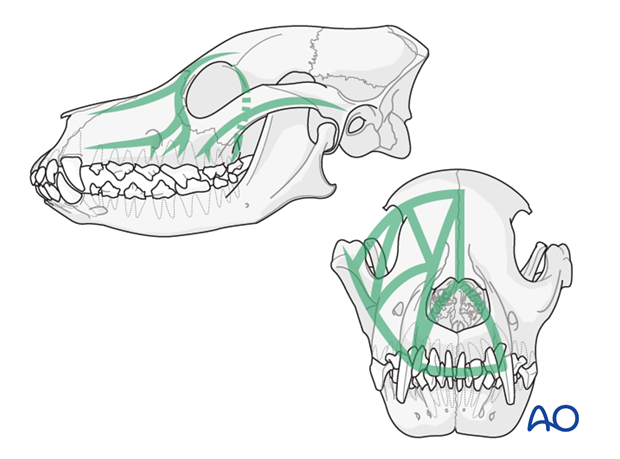
2. Airway considerations
General anesthesia delivered via endotracheal intubation is necessary for the imaging and surgery procedures. If endotracheal intubation is not feasible, pharyngeal intubation and/or tracheostomy should be considered.
Malocclusion resulting from trauma requires pharyngeal intubation in order to optimize the occlusion during surgery.
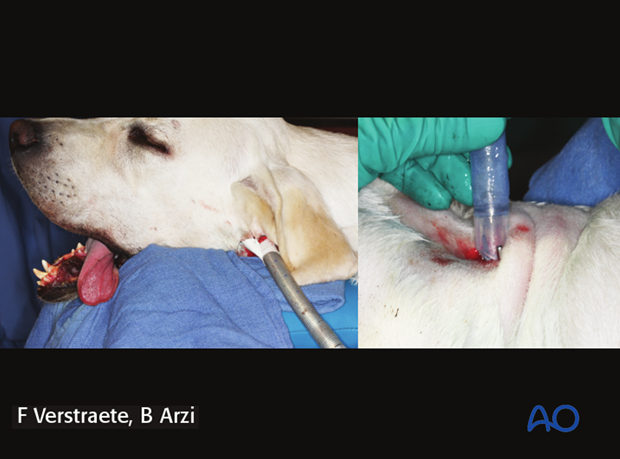
3. Surgical principles
The most important goal is to restore normal anatomical contour and allow for normal function.
The image shows assessment of the malocclusion. Reposition of the oral cavity is critical for a functional outcome.
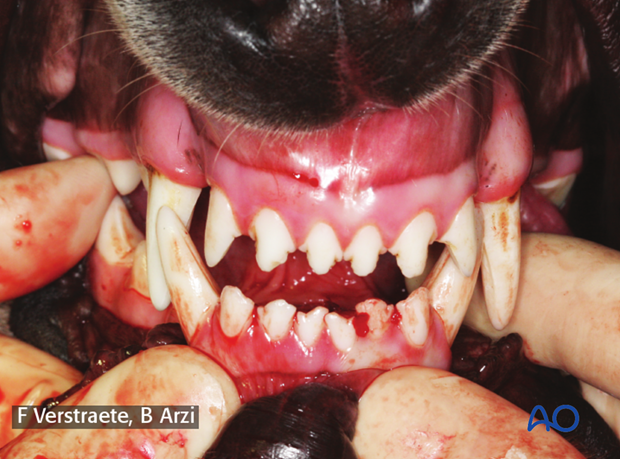
Another surgical principle is to achieve anatomically correct repositioning of all midfacial bones. The height, width, and jaw projection should be reestablished. Successful reconstruction of midfacial fractures is obtained by first reestablishing the midfacial buttresses.
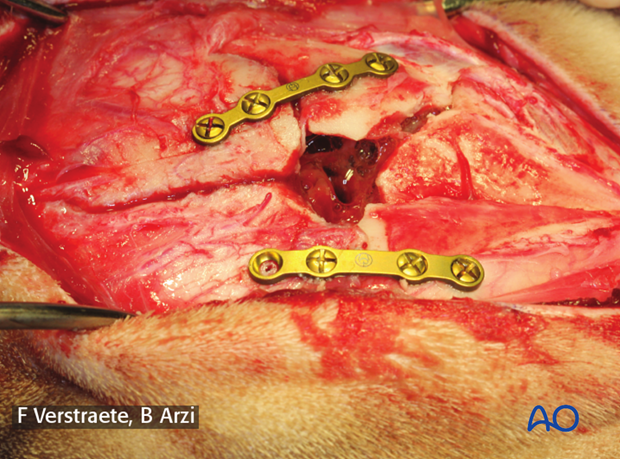
After the buttresses are established, the rest of the fragments can be secured to the reconstructed framework. If a non-vital bone fragment is dislodged into the nasal or frontal cavity, it should be removed and discarded. As a general principle, all fractures should be exposed and reduced before plating.
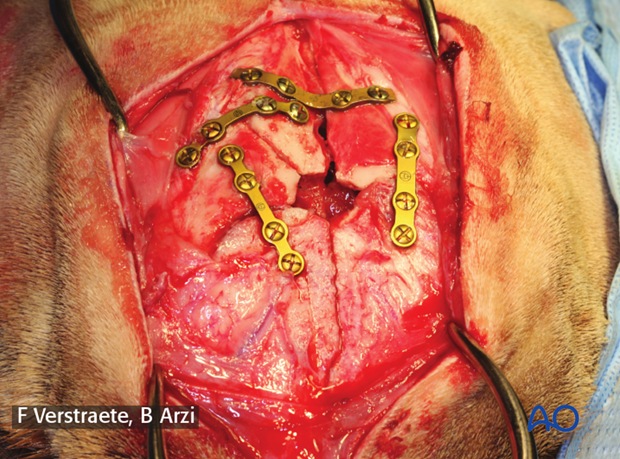
Complexity of fracture fixation is determined by:
- Fracture morphology, including the number of fracture lines
- The necessary approach
- Accessibility
- Visibility of the area of interest
- The stability after fracture reduction
The number, size, and position of plates and screws needed for fracture fixation varies depending on the biomechanical and biological situation of the case.












